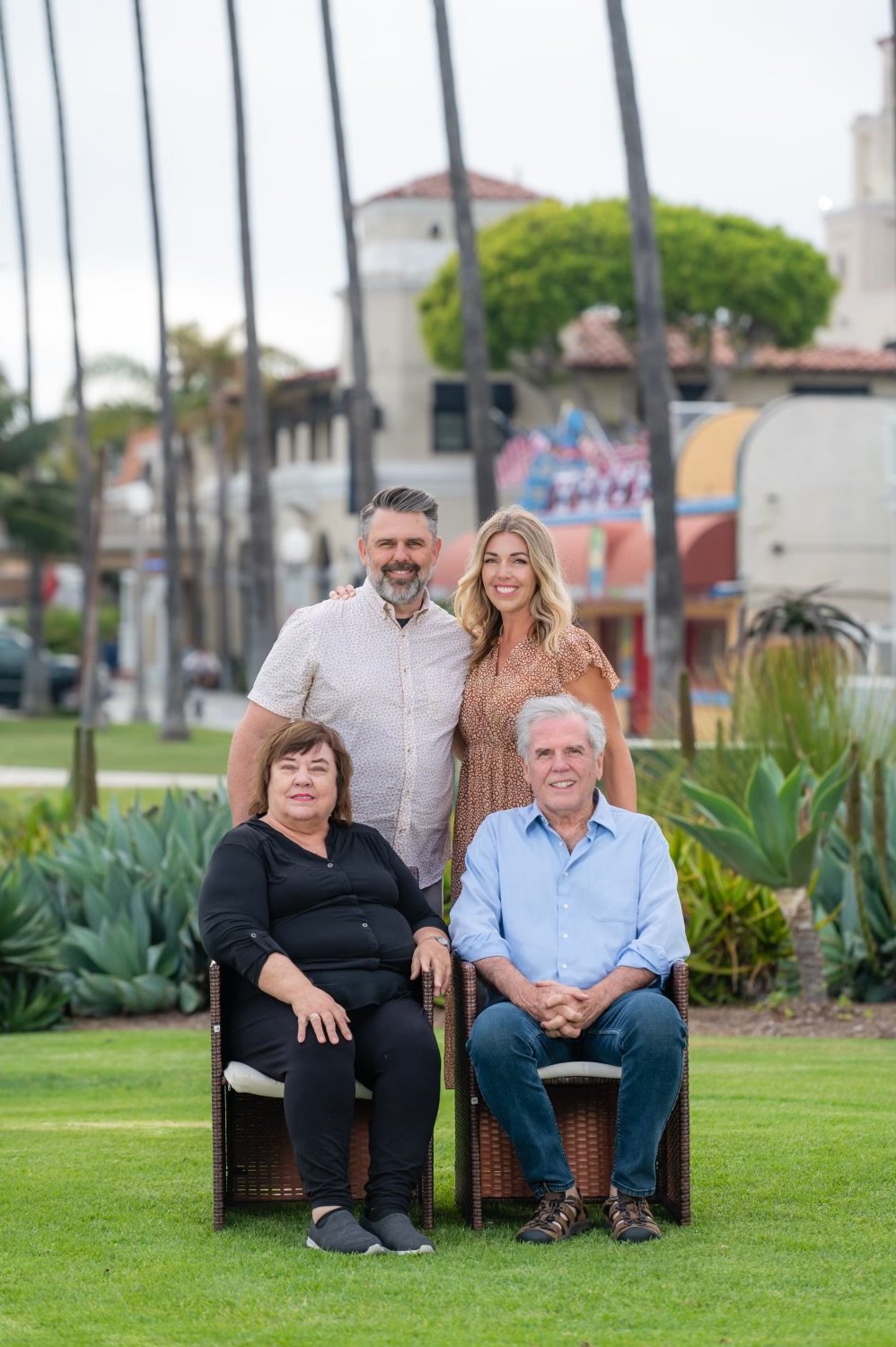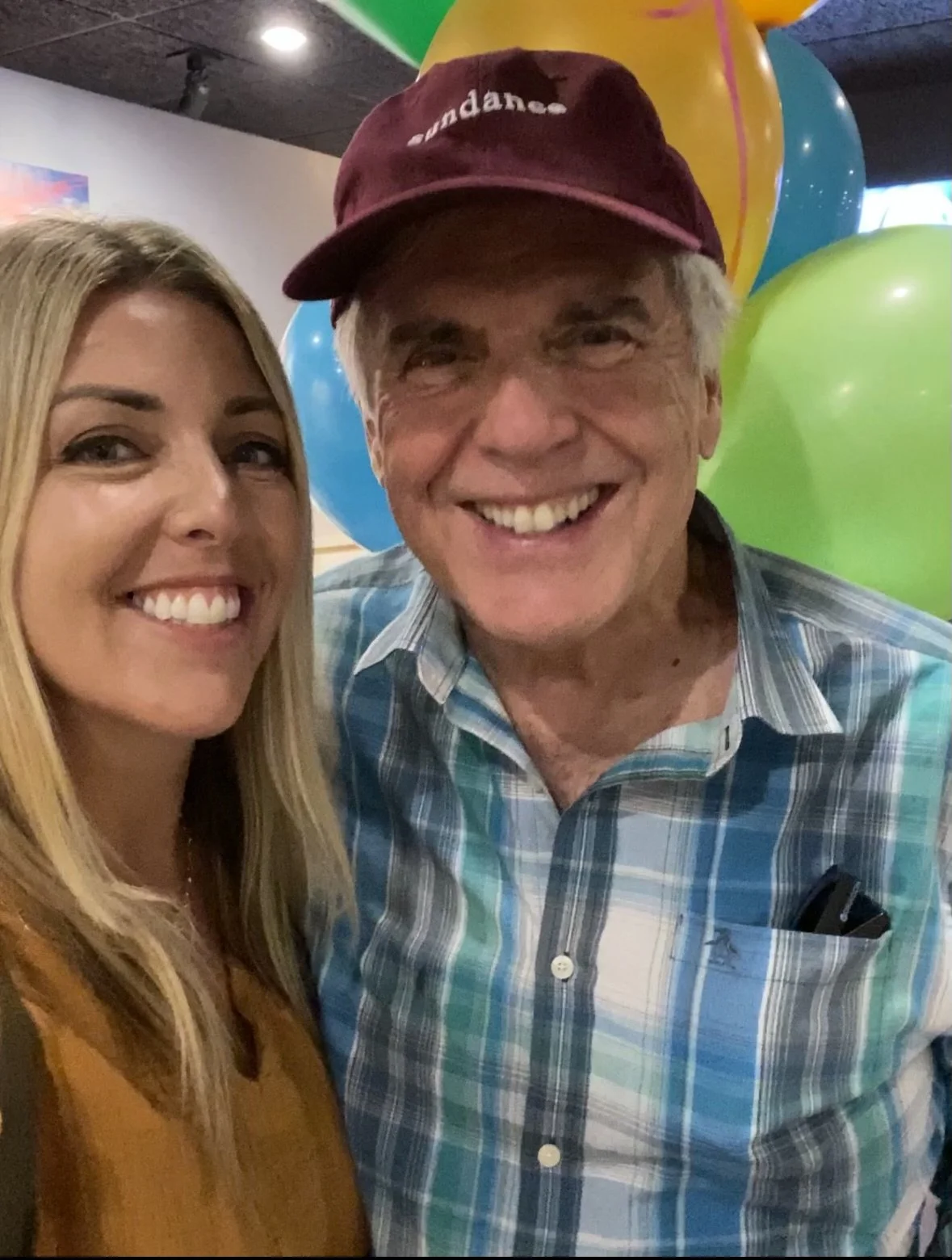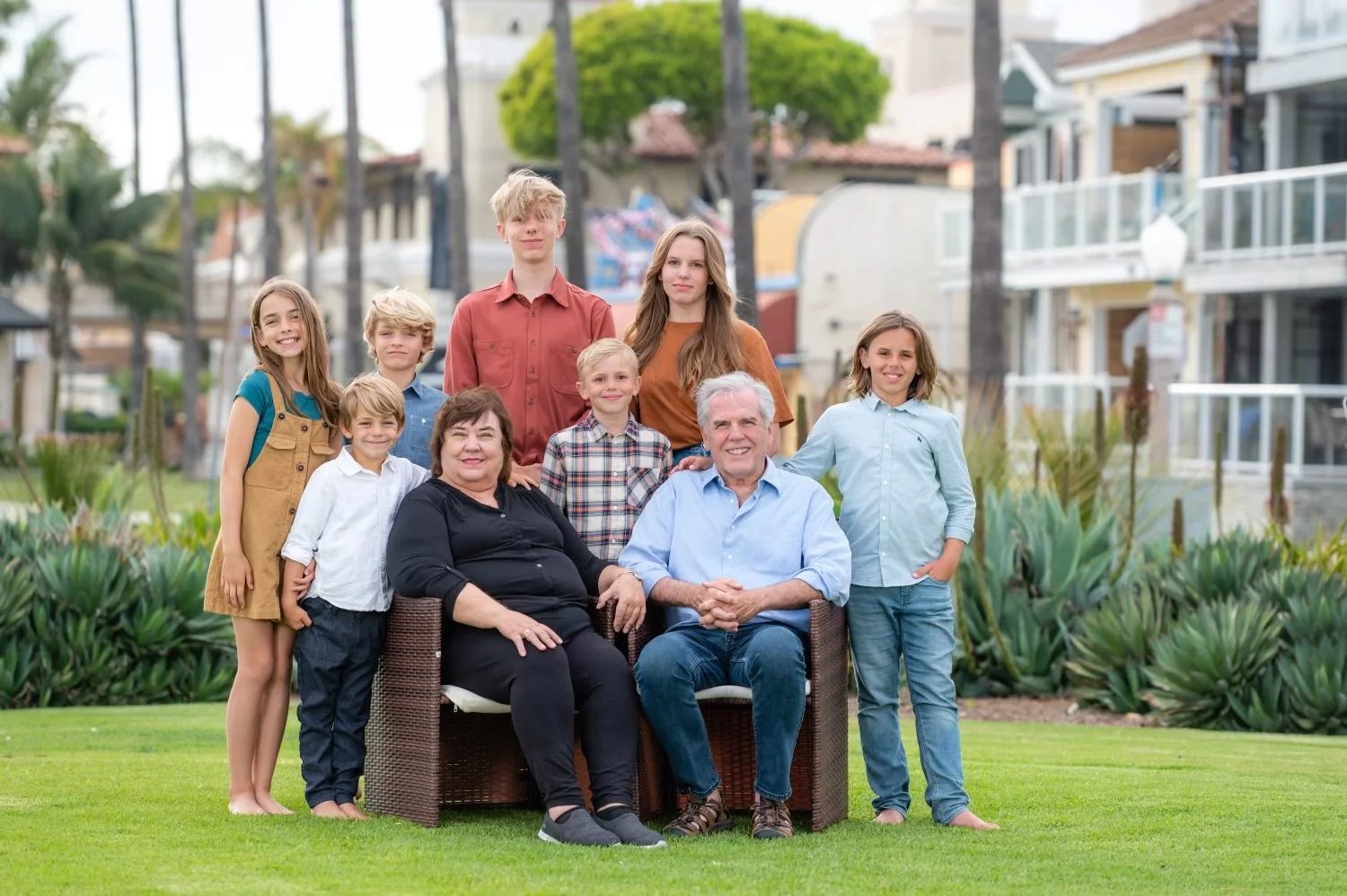When she was four years old, Lisa Ashton and her older brother Joe took a walk around the block with their father. A walk Lisa would never forget. As they circled their Rancho Cucamonga, CA neighborhood, Ken Taylor assured his kids it was in no way their fault, but he would soon be moving out of their home. He and their mother were getting a divorce. After Ken moved out, Lisa took many walks around the same neighborhood over the years, but often by herself. Her brother was four years older and didn’t want to hang out all the time with his younger sister, and their single mother was often gone at work.
Lisa spent years processing that her life just looked different from that of many of her friends.
When she and Joe spent every other weekend as well as vacations with their father, they observed Ken had a roommate they called “Uncle Ed” who lived with him for many years. Lisa remembers it being a little confusing. Ken and Ed had lots of other male friends they hung out with (some with kids of their own), and she remembers them giving disapproving looks when her brother once said “That’s so gay” in a derogatory manner. When Lisa was 11, Ken finally felt it was time. He told Lisa, “I have a lot of male friends who are attracted to men.” Lisa asked, “Would you be gay?” With a deeply pained sigh of relief, Ken said yes.
When Lisa turned 14, her brother had moved off to college and she was living alone in a big house with her mother, Teresa (who Lisa and Ken agree earned her nickname “Mother Teresa.”) By this time, Ken felt it was his turn to be the full-time parent and all agreed to the arrangement. Ed and Ken broke up shortly after, and Lisa and Ken moved into an apartment in Dana Point, CA. When Joe returned from his LDS mission, both kids lived with Ken for a short time before Lisa went to BYU and her brother returned to college. Of having a gay father, Lisa says, “It was the 90s; things were so different back then.” She knew her childhood was atypical. She wasn’t sure who she could trust with this information. As an adult, she now freely talks about her story and lessons learned along the way about unconditional love and acceptance learned from both of her parents.
Ken’s upbringing was also atypical. He was born in 1950 in Washington D.C., the seventh of eight kids of parents who were married in the temple. Due to his father’s job as a foreign service officer for the state department, they moved around internationally, spending time in Mexico, Austria, and Canada in between stints in the states. Ken said he was always active in the church, but he recognized that something about himself was different. While living in Vienna between the ages of 11-15, Ken was involved in an American scouting program there and dated girls like all the other guys did, but he found it interesting that the most popular boy in school came on to him. Ken did not want to resist and thought, “If he can do that, why can’t I?”
Ken spent ages 15-18 in Montreal, where as a high school student he met a fellow gay peer named Eric from Holland who was active in the LDS church and engaged to marry a girl. They eventually had six kids and later got divorced, then remarried, then divorced again. Eric now lives in Holland with his boyfriend. But back when they were young, Eric had asked Ken to run away with him and forget about everything. At the time (1968), Ken couldn’t fathom doing something like that due to the church culture in which he’d been raised and was trying to make work.
Instead, Ken went to BYU after graduation. His father had just retired and his whole family moved to Salt Lake City. It was 1968, and Ernest Wilkinson was president of BYU. In his “welcome speech” to the university, President Wilkinson uttered those now infamous words:
“We [do not] intend to admit to our campus any homosexuals. We do not want others on this campus to be contaminated by your presence,” and invited them to leave immediately. At the time, Ken felt so deep in the closet, he didn’t admit he fit into that category; rather he was convinced the church would help him “get out of that.” He was surrounded by returned and preparing missionaries and decided he should take the same course. At 19, Ken was called to serve in eastern France and was excited he’d be able to put his Montreal-acquired French and German to good use.
Before his mission, his stake president asked if he was worthy to serve, and Ken said, “I wouldn’t be here if I wasn’t.” But the pressures of the MTC got to him, and feeling guilty, he went to an authority there to confess his history. The man said, “I don’t know much about this but you need to drive up to Salt Lake and see (Elder) Spencer W. Kimball,” who was an apostle at the time. Elder Kimball interviewed Ken in detail about everything he’d been involved with and said he’d still let him serve his mission as long as he promised to write him once a month, and warned that if he ever got involved in anything, he’d be sent home immediately. He also told Ken never to talk about this part of him again with anyone. Ken was petrified, and says he never did anything immoral by the church’s standards on his mission.
On his mission, Ken told just one companion about his attractions, and the companion told Ken that his father was also gay. This young man had gone on a mission hoping his parents would get back together, but his dad didn’t want to because he had a gay partner. He wanted to keep that relationship while still being a father. Subconsciously, Ken recognizes this became the first model for how he would later choose to live his life.
Ken wrote to Spencer W. Kimball month after month and never got a reply or any other type of support, “not that I expected it, knowing he was a busy man.” Shortly after he returned from his mission in France, Ken realized that he had many allies who supported him unconditionally. One was David, an MD, who became Ken’s best friend. When Ken came out as gay to David (they were 21), David’s reply was, “It makes no difference to me. I still love you.“ David and his wife have stood by Ken his whole life, sharing love, friendship, and even some much needed medical advice. When he returned, he went back to BYU. During his second year there, he met Teresa. Ken says he fell in love with her and had never loved any woman like he loved her. “She was very energetic, happy, positive, and I thought several times, ‘If I have to have a woman as a partner it should be her as she’ll be a wonderful mother and partner in so many ways.’ And she was.” But focused on her education and career, Teresa wasn’t looking to get married. It would be six years later of Ken dating some other women but holding out for Teresa until they got married in 1977.
Ken transferred to the University of Utah, where Joe was born. He served in a bishopric while earning degrees in French and Business Management. Ken and Teresa wanted many kids, but were only able to have two. The family lived in Murray, UT and it was in that house that Ken finally came out to Teresa after he started having long talks with a man he’d met while doing business. Ken felt conflicted in many ways – at this time, he was starting to seriously doubt the church after learning various stories about church history. He took a list of ten questions to Charles Didier, who had served as his second mission president, and now was a member of the Seventy. Charles had some written information sent to Ken that attempted to answer his questions about the Book of Mormon origins, first vision, temple, etc., but after the packet came in the mail, there were still holes in his testimony Ken couldn’t fill. Another leader around that time suggested gay conversion therapy, something Ken immediately rejected. As he worked it all out in his mind, he came to the conclusion that per the church teachings of the time, one could not both believe in the truth that they are gay and the truth of the church. He opted with the truth he did inherently know and had painfully tried for years to suppress.
Ken says it was a mix of his pulling away from the church and being gay that ultimately ended his marriage. As this happened, Teresa told their stake president he’d moved out, and he was called in. The stake president said, “It’s been reported that you’ve been involved in homosexual activity.” Ken replied he would not be sharing details, that it was personal. The stake president said that as a high priest, he’d be summoned to a church court. Ken wrote a letter in response saying, “Whatever you do, it’s your choice. But I’m not coming to a court.” Shortly after, Ken received a letter stating he’d been excommunicated. In the first few lines, he was told he could still pay tithing though if he wanted, but only through an active member.
Ken and Teresa kept their divorce amicable, no lawyers. Both the initial distance from his family and the church created a sense of loneliness and isolation. Ken didn’t tell his kids about the rupture of his testimony until they were much older and asked. (Joe eventually also left the church.) One day Ken read a book about Carol Lynn Pearson’s marriage to a gay man, and they began to correspond. Through her, he connected with some other men in similar situations in his area and through an Affirmation conference in Palm Springs, he developed an off-shoot friend group of men who were also fathers and called themselves the “Gamofites” (gay Mormon fathers). Lisa remembers them having family pool parties and exchanging holiday cards as she also got to know her dad’s friends.
The Gamofites ran the gamut of church activity and belief, and took their shared skills of leadership and organization to create something that could uniquely fill their needs for fellowship. They eventually grew to over 400 men, and they had a mission statement, regional retreats, and talent shows (where sometimes church hymns were sung). Ken was the self-appointed librarian and still has binders from their meetings. He says, “Every retreat, the Gamofites came into play as people realized they’re in a safe place, and if we were to have a quorum, this would be one where we could belong to a brotherhood.” While many of them have moved on, he remembers those as “the best of times,” and thinks if to this day he called five of them and said, “Let’s have another retreat,” they’d still come.
Ken has had a couple more relationships since Ed, and currently is “madly in love with the mind” of a man named George who lives in Cyprus. They talk every day, and he has been to visit. While they’re distanced in age and proximity, he says they’re close in many ways and enjoying it for what it is.
Ken recognizes the church instilled many good qualities in him including hard work and service, and says he doesn’t want to throw the baby out with the bath water. He acknowledges he had spiritual experiences on his mission and says, “Whether they were contrived or spontaneous, it doesn’t matter. I take them as treasures from a former life, but don’t want to go back. But I want my kids to make their own choices; that’s free agency. That’s a principle.” He has showed up to support Lisa’s three kids (ages 6, 9, and 11) at baby blessings and baptisms. When Lisa married her husband Rodney in the temple, they also had a civil ceremony so Ken could be a part of it, which was a less common practice at the time.
Lisa says her kids have asked why Papa Ken and Nana aren’t together but haven’t asked a ton of questions yet about why not; Lisa says she explains to them what she thinks they can understand at their individual ages and is appreciative of how times have changed. “For me, growing up in the 90s and 2000s it was a whisper, ‘My dad is gay.’ Now it’s more of a bold, ‘Papa Ken is gay.’ I used to always wonder when it was the right time to tell people about my dad; now it’s just easier to.” Ken and Teresa are cordial and attend holiday dinners together. They’ve taken Lisa to Disneyland together several times on her birthday. When people ask if he has any regrets about his life, he says he has no regrets about marrying Teresa and having his two beautiful children. But he does regret following the advice of church leaders at the time to bury who he was, to not talk about it to women he dated, and not tell Teresa he was gay. For so many years, he was caught between that rock and hard place.
He says, “I realize I should have told her – it’s my responsibility and I was not being forced to not tell her. But in order to be accepted by Mormonism, I needed to marry a woman. When I finally came out to her, she wasn’t bitter or hateful. She said, ‘We’re going to work through this and find a way to get through this.’ I told many Gamofites, ‘If you have to be married, you should be married to someone like Teresa’.” Lisa concurs, “She’s been very Christlike and forgiving and never bad mouthed my dad. The only thing she’s said is ‘I wish he had told me’.”
Other family members did struggle with Ken’s coming out, one even saying she wished Ken had died of AIDS (it was the 80s when he came out). But Ken and Lisa are grateful that in their family unit of four, they accepted things for what they were.
The family members now lead their lives throughout southern California, where they still sometimes take walks around the block--together. Lisa says, “We’re doing the best we can in this situation. We stay close. We all talk every day in some form. We visit often and love each other very much. No one’s on the outskirts. While it hasn’t been easy, we’ve stuck together.”






















